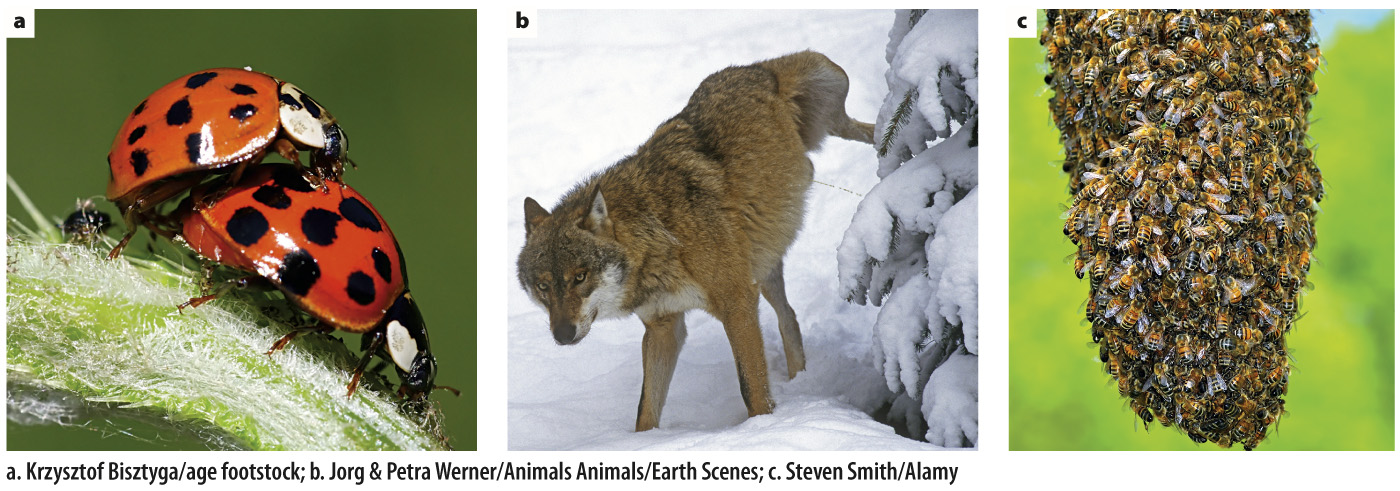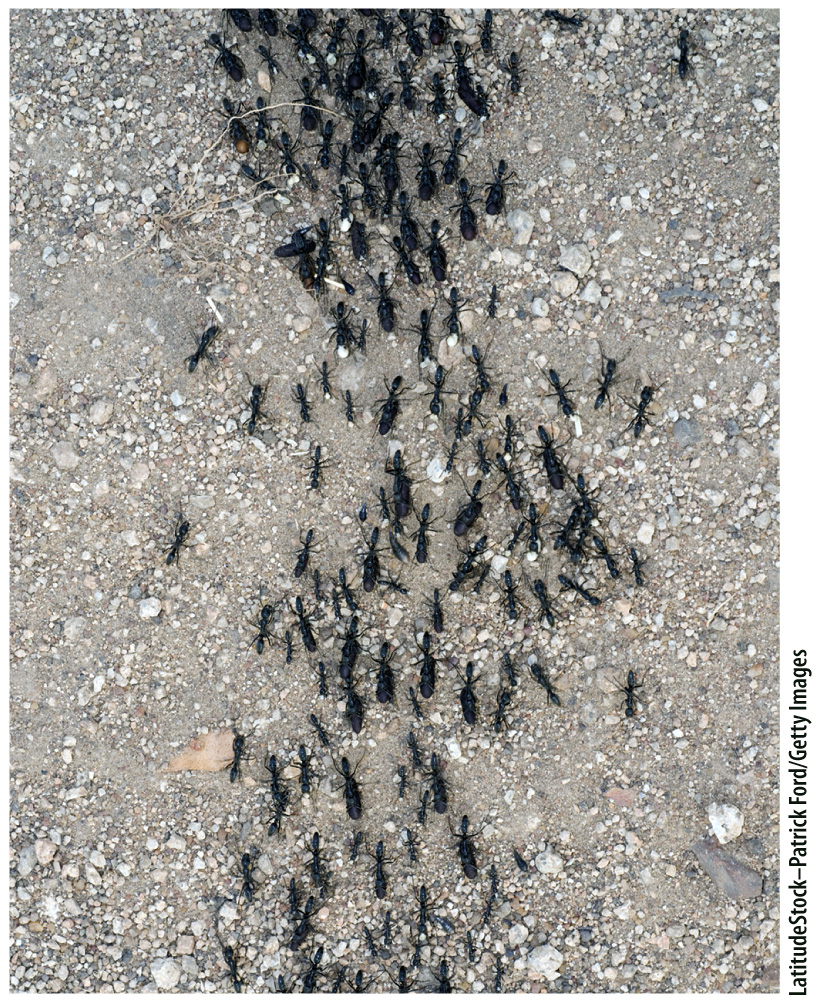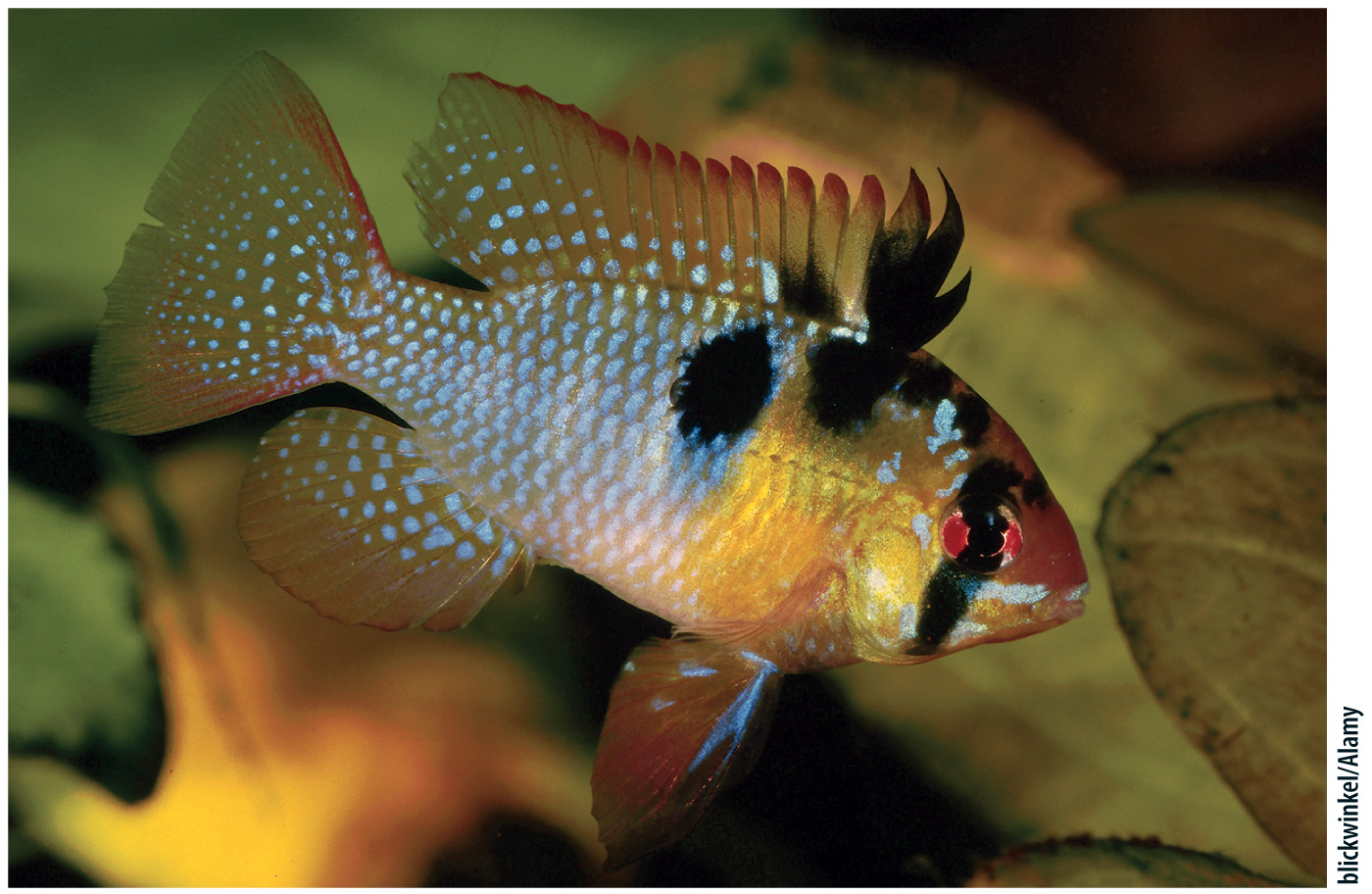Pheromones are chemical compounds released into the environment to signal physiological and behavioral changes in other species members.
Many animals release small chemical compounds into the environment to signal and influence the physiology and behavior of other members of their species. These water-

Female silk moths use pheromones to attract males over long distances. The sex pheromone bombykol, released from a gland in the female’s abdomen, signals her location to males looking for a mate. Sex pheromones play a key role in the mating behavior of many invertebrate and vertebrate species. In most mammals, amphibians, and reptiles, pheromones are detected by a vomeronasal organ with chemosensory neurons in the nasal region of the skull. The release of sex pheromones to attract a mate and trigger ritualistic social and mating behaviors is one of the most common types of pheromone signaling (Chapter 45). Humans and nonhuman primates lack a vomeronasal organ, and most studies indicate that they do not produce pheromones.
Other pheromones signal territorial boundaries or predatory threats. Dogs and other canids (this family includes wolves and coyotes), as well as cats, secrete pheromones in their urine that mark their territories. Social seabirds, such as cormorants and boobies, mark their nesting sites by pheromones.

Ants and other social insects deploy alarm pheromones to warn of an attack by an advancing army from another colony. The release of alarm pheromones from a stinging bee causes other bees to swarm and join the attack to defend their nest. In many other species, an animal under attack releases an alarm pheromone, warning its neighbors. Similarly, social mammals such as deer warn of an approaching predator by means of alarm pheromones.
Social insects, such as ants, deploy trail pheromones that provide chemical cues that other worker ants can follow to a food source (Fig. 38.15). An ant returning to the colony from a food source releases trail pheromones from its abdomen onto the soil. Other worker ants detect the trail with their antennae and track the concentration of trail pheromone, guiding them along the trail. If you have watched ants marching in line across a sidewalk, a trail, or into and out of your house, you have seen worker ants using pheromone cues that signpost the way to food.
Aquatic species also depend on pheromone signaling. Fish, salamanders, and tadpoles release alarm pheromones into the water to warn of a threatening predator. Prey species that share the same habitat may even sense and respond to the release of another species’ alarm pheromone.
Fish also release pheromones to coordinate mating and to regulate social interactions. In dense populations of cichlid fish living in Lake Tanganyika in central Africa, the ratio of brightly colored breeding males (Fig. 38.16) to females is highly regulated. Only about 10% of males are brightly colored and defend their territory to attract and mate with females. This restriction on the number of dominant breeding males is regulated by behavioral cues and chemical pheromones. When a dominant male dies, subordinate males fight for the vacated territory. When a new male assumes dominance, it becomes brightly colored to attract females and defend its newly won territory. The dominant breeding male reinforces its dominance by releasing pheromones in its urine that signal females and subordinate males in its breeding area. The color change is mediated by hormones released from the male fish’s pituitary gland, which act on pigment cells called melanocytes that are located in the epidermis of its scales. Thus, the fish makes use of both endocrine and pheromone signals to change its behavior and the behavior of other members of its species.

Quick Check 4 What distinguishes paracrine and pheromone signals from endocrine signals?
Quick Check 4 Answer
Paracrine signals are chemicals secreted by a cell that influence the activity of neighboring cells without entering the bloodstream. Pheromones are chemicals secreted into the environment and transmitted to other members of the same species, influencing their behavior. Hormones are released into the bloodstream and have effects on distant cells within the same individual.